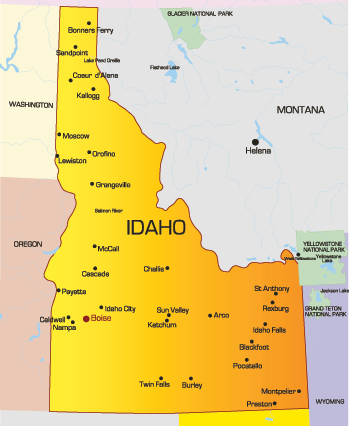Image is Israeli interceptors trying and failing to intercept missiles over their cities.
Israel just carried out a widespread bombing of Iran, which has killed a number of senior officials inside Iran (though it seems the leadership is more-or-less intact) as well as a number of civilians. Important facilities have been targeted, but the amount of damage is unknown so far (note that many important Iranian facilities are deep underground, making them both hard to damage but also hard to determine if they are damaged from just satellite imagery, so reports of damage will be he-said-she-said).
It appears the attack took Iran by surprise, given that a residential block was targeted that contained some senior officials - if one saw an attack coming, one would imagine they’d be in bunkers. Nonetheless, like the rest of the Resistance Axis, I suspect that Iran has adapted their military structures to be resistant to decapitation strikes by ensuring that replacement figures are ready to take the place of killed officials.
Iran has delivered a massive missile barrage in response to Israeli aggression, even though Israel is continuing to bomb Iran. Iran is now aware of the location of many important Israeli sites, including secret nuclear sites, due to their recent intelligence haul, giving them a distinct edge.
Last week’s thread is here. The Imperialism Reading Group is here.
Please check out the RedAtlas!
The bulletins site is here. Currently not used.
The RSS feed is here. Also currently not used.
Israel-Palestine Conflict
Sources on the fighting in Palestine against Israel. In general, CW for footage of battles, explosions, dead people, and so on:
UNRWA reports on Israel’s destruction and siege of Gaza and the West Bank.
English-language Palestinian Marxist-Leninist twitter account. Alt here.
English-language twitter account that collates news.
Arab-language twitter account with videos and images of fighting.
English-language (with some Arab retweets) Twitter account based in Lebanon. - Telegram is @IbnRiad.
English-language Palestinian Twitter account which reports on news from the Resistance Axis. - Telegram is @EyesOnSouth.
English-language Twitter account in the same group as the previous two. - Telegram here.
English-language PalestineResist telegram channel.
More telegram channels here for those interested.
Russia-Ukraine Conflict
Examples of Ukrainian Nazis and fascists
Examples of racism/euro-centrism during the Russia-Ukraine conflict
Sources:
Defense Politics Asia’s youtube channel and their map. Their youtube channel has substantially diminished in quality but the map is still useful.
Moon of Alabama, which tends to have interesting analysis. Avoid the comment section.
Understanding War and the Saker: reactionary sources that have occasional insights on the war.
Alexander Mercouris, who does daily videos on the conflict. While he is a reactionary and surrounds himself with likeminded people, his daily update videos are relatively brainworm-free and good if you don’t want to follow Russian telegram channels to get news. He also co-hosts The Duran, which is more explicitly conservative, racist, sexist, transphobic, anti-communist, etc when guests are invited on, but is just about tolerable when it’s just the two of them if you want a little more analysis.
Simplicius, who publishes on Substack. Like others, his political analysis should be soundly ignored, but his knowledge of weaponry and military strategy is generally quite good.
On the ground: Patrick Lancaster, an independent and very good journalist reporting in the warzone on the separatists’ side.
Unedited videos of Russian/Ukrainian press conferences and speeches.
Pro-Russian Telegram Channels:
Again, CW for anti-LGBT and racist, sexist, etc speech, as well as combat footage.
https://t.me/aleksandr_skif ~ DPR’s former Defense Minister and Colonel in the DPR’s forces. Russian language.
https://t.me/Slavyangrad ~ A few different pro-Russian people gather frequent content for this channel (~100 posts per day), some socialist, but all socially reactionary. If you can only tolerate using one Russian telegram channel, I would recommend this one.
https://t.me/s/levigodman ~ Does daily update posts.
https://t.me/patricklancasternewstoday ~ Patrick Lancaster’s telegram channel.
https://t.me/gonzowarr ~ A big Russian commentator.
https://t.me/rybar ~ One of, if not the, biggest Russian telegram channels focussing on the war out there. Actually quite balanced, maybe even pessimistic about Russia. Produces interesting and useful maps.
https://t.me/epoddubny ~ Russian language.
https://t.me/boris_rozhin ~ Russian language.
https://t.me/mod_russia_en ~ Russian Ministry of Defense. Does daily, if rather bland updates on the number of Ukrainians killed, etc. The figures appear to be approximately accurate; if you want, reduce all numbers by 25% as a ‘propaganda tax’, if you don’t believe them. Does not cover everything, for obvious reasons, and virtually never details Russian losses.
https://t.me/UkraineHumanRightsAbuses ~ Pro-Russian, documents abuses that Ukraine commits.
Pro-Ukraine Telegram Channels:
Almost every Western media outlet.
https://discord.gg/projectowl ~ Pro-Ukrainian OSINT Discord.
https://t.me/ice_inii ~ Alleged Ukrainian account with a rather cynical take on the entire thing.
this isnt news, but my family has been sending videos of missiles and interceptors over their heads. obviously there is a real fear that a zionist interceptor could fall and hit them, like zionist interceptors have done in the past. but there is a real awe involved in all of what has happened today.
zionist jets shot down, possibly a high ranking zionist assassinated, and massive strikes into the heart of the entity. it really feels like a moment of joy for those of us who have had so much taken from our families at the hands of the entity.
this pales in comparison to what the entity has done to us, we wont rest until we are liberated with a right to return. but this really was needed for Palestinians
Just reading some Middle East
MonitorSpectator and it looks like the nuclear secrets leak may have fucked Israel over hard. Iran has the target bank Israel had collected on them, and hard evidence of EU-Israeli nuclear weapons collaboration. It even made a claim of Israeli nuclear weapons by countering the latest refinement offer by the US with a demand that Israel dismantles existing nuclear weapons.Of course, we all know Israel possesses nuclear weapons. A full triad, in fact. However, no hard evidence of its existence has ever been made public, allowing Israel to maintain deniability and skirt international treaties on nuclear proliferation. If Iran has any solid evidence, Israel has suffered a historic intelligence defeat.
On top of the data leaked, Iran has stated that any Israeli attack would be met with an immediate retaliatory strike. True Promise III in scale but with a target bank that would scare the ever living shit out of Israeli statescraftsmen.
The IAEA was also informed directly that any attack on its nuclear sites would lead to immediate withdrawal from the NPT and development of nuclear weapons. We know Iran has been preparing for this due to the IAEA’s claims that Iran tested implosion devices necessary for nuclear missile warheads. The former Iranian atomic energy head also suggested that the fatwa given against development of WMDs does not necessarily forbid nuclear weapons as they can be reduced in yield for tactical (but not “mass destruction”) levels of power, suggesting one way these rules may be interpreted depending on geopolitical tensions.
Finally, Netanyahu took a 40 minute call with Trump following the Iranian counter proposal, and suggested that Israel would be willing to accept 3.67% Uranium domestic enrichment (Israel wanted 0% and offshoring of Iranian enrichment) without striking Iran. This is a massive capitulation if it holds true, and would open the route to de-escalation as the Israeli state reels from the fact it has absolutely beyond fucked it with their nuclear secrets.

The first of many:
https://xcancel.com/MyGlendale/status/1931915078212952336After careful consideration, the City of Glendale has decided to end its agreement with U.S. Homeland Security/ICE to house federal immigration detainees.
This local decision reflects our core values: public safety, transparency, and community trust.
new wave incoming, sirens going off in Tel Aviv

israeli missile alert map, starting to look like their sex offender map
🔴 Urgent:
🔺Iranian intelligence says it has thwarted a Mossad operation. A truck full of drones has been intercepted inside Iran.
🔺It is said that a drone pickup truck was caught in Zanjan and a Toyota Hilux with a cabin was caught in Kermanshah while transporting drones.
🔺We emphasize again: Dear people, be very sensitive to the movement of pickup trucks and trucks around you and report the reports to the police and security agencies (call numbers 113 and 114).
Insight @Partisan2015
no more half measures walter


Maybe I’m remembering things wrong, but it feels like these protests themselves are MUCH less hot than the George Floyd protests were, but the response from the police went from 0 to superviolent way faster.
Mood immediately improved after seeing the hit on tel aviv
It’s crazy how much the mood improves whenever Israel gets owned. May Allah grant us the honor of witnessing the total destruction of the Zionist Entity.
lmao
The nytimes live feed right now is so infuriating because they are telling on themselves so thoroughly how there was NO in depth discussion of the humanization of the individual experiences of the human carnage and destruction of Palestinian lives as it was happening.
The live thread is a detailed discussion of every Israeli that gets hurt and dies it’s so fucking obvious that they value their lives and what happens to them more than anyone else it’s so disgusting how obvious it is that this shit pales in comparison to what happened to the Palestinians and they just never cared it’s so gross.
Let’s feel sorry for these people instead sure; tell us their occupations and stories and their pictures. It’s not like you could have done that with anyone else huh? It’s just all sob stories about the colonizers their lives are valued more and we all know it! Just come out and say it then!! Sorry I’m just so mad about this these people are cowards and they could have put journalists in Gaza before this happened and they would have been killed and you could have shown a light on that but you didn’t because your institution is a wretched zionist propaganda outlet.
Fuck you nytimes!!! Eat shit!!!
⚡️⭕️ Pakeh settlement resident to Hebrew Channel 11:
I received my new house yesterday and it was destroyed today in the Iranian missile attack
 Iran doing more anti-colonialism in 2 days than Bernie Sanders in his life
Iran doing more anti-colonialism in 2 days than Bernie Sanders in his lifeI really do see the general opinion of Israel shifting. I was telling a coworker, who I consider apolitical, about the Iran strikes and he put up a fist.












